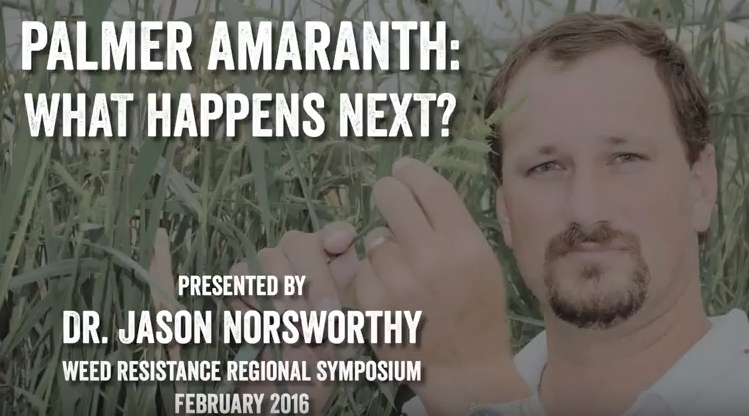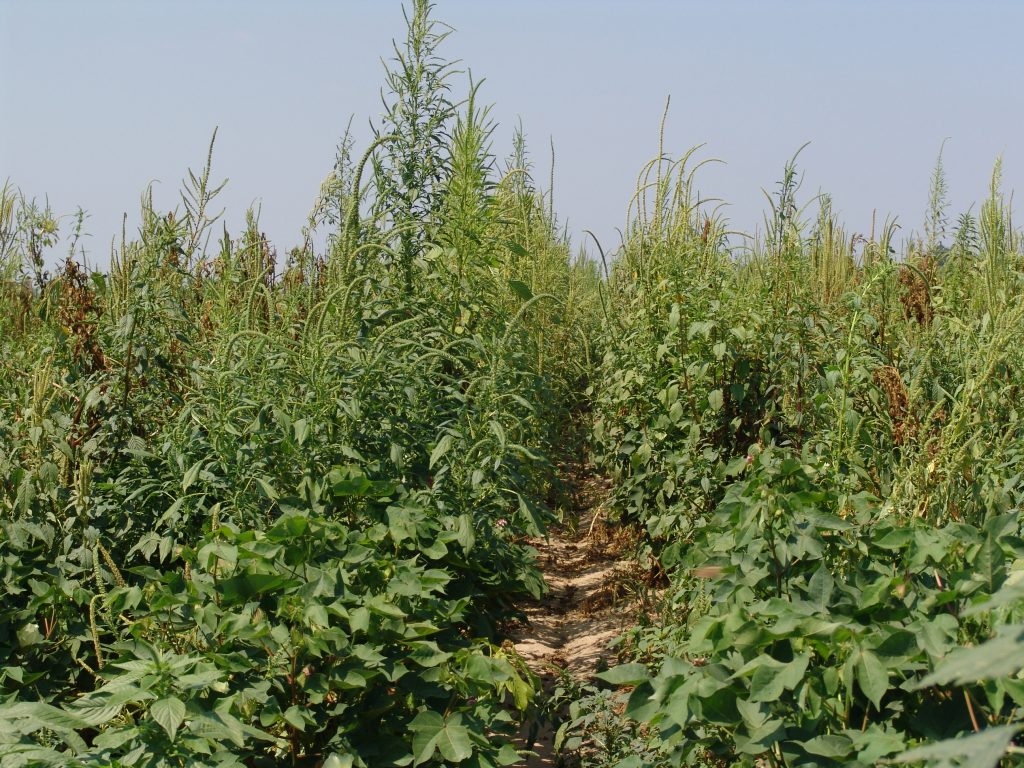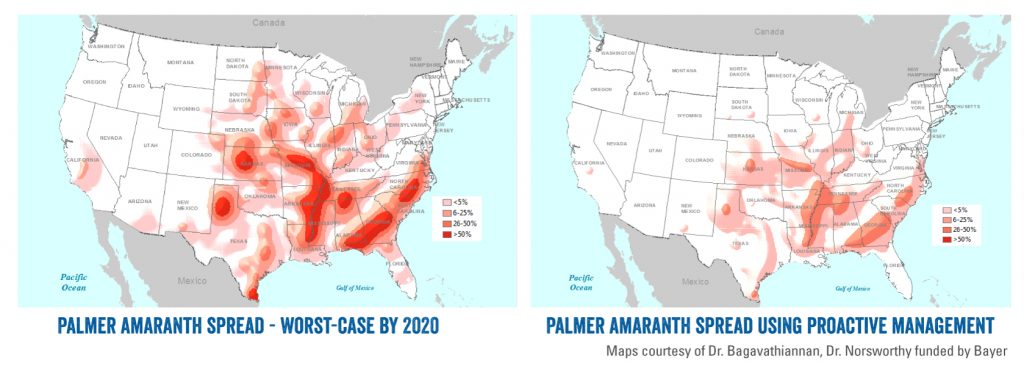Palmer Amaranth: What Happens Next?

Over the past few weeks, we’ve shown you why farmers should be concerned and why Palmer amaranth spreads. Palmer is a relatively new (and unwelcome) addition to South Dakota and southwestern Minnesota. While we have not yet seen its devastating effects in North Dakota, the spread of this superweed seems inevitable.
This week, we are looking at the possible outcomes in the fight against Palmer amaranth. In the following video from February 2016, Dr. Norsworthy shows various versions of the weed’s spread.
How can we minimize the devastating effects of Palmer amaranth in our region?
For one, we have the advantage of learning from farmers in the southern United States. Palmer amaranth gained notoriety by leaving soybean fields unharvestable with their extreme pressure. With time on our side and additional knowledge about the impact of Palmer amaranth, there are many actions Midwestern farmers can take to prevent the weed from becoming a normal sight in their fields. Using multiple Modes of Action, applying PREs, utilizing crop rotation, and hand weeding are among the ways to diversify your weed control program and manage Palmer amaranth and other resistant weeds. Now it’s up to you to implement these tactics on your farm.
Dr. Norsworthy shared the above images (click the image to enlarge the map) at a recent meeting. The map on the left shows the worst-case scenario in the year 2020, if we do not change our weed management practices. The map on the right shows how increased management and adopting additional management techniques (crop rotation, PREs, multiple Modes of Action) could reduce the spread and intensity of Palmer amaranth.
Keep in mind that these techniques should also be practiced to control current weed threats in our region – kochia, waterhemp, ragweed, and marestail.
As always, give me a call with any questions about Palmer or weed resistance in general. In the meantime, check out the links below to learn more about identifying Palmer amaranth, why it spreads, and much more.
University of Minnesota Extension – Palmer Amaranth Study
Purdue University – Palmer Amaranth Biology, Identification, and Management













